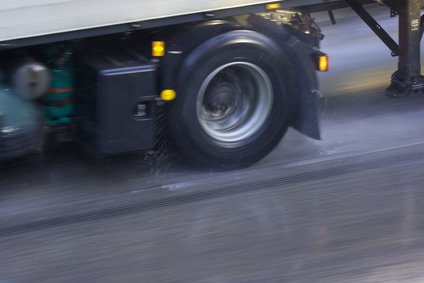
Continuing on our first article on brake linings for trailers, we will briefly touch on the importance of quality when it comes to choosing brake linings, provide some interesting facts and give practical advice on maintaining your brakes for optimal use.
Brake Fade and Recovery:
When the brake lining gets in contact with the brake drum heat is generated, this has to dissipate from the outer drum surface. Once the drum gets very hot due to the increase in temperature the lining will start to fade – losing the friction level.
Brake Fade is prevalent in all friction materials though with a good friction material bought from a reputable company the fade process is gradual and within safety standards. Recovery of the brake lining to its original properties is very crucial and this ability to recover is a very important factor between a good and an inferior lining.
Poor recovery of the brake lining will severely damage the brake drum and considering that a brake drum costs by far more than a set of linings it would make in the final end no sense to buy “cheapies”.
That is why JMR is focused on supplying quality brake linings at a competitive price to ensure our clients get the best value for their money. For a free, no-obligation quote, contact your closest JMR branch.
Lining Material:
Resin impregnated cotton fabric was one of the first material specifically developed for friction application, though it has been replaced by brake friction materials made from Chrysotile asbestos compounds because of the excellent heat resistance.
Studies in the 90’s have shown that this material is highly toxic and a high proportion of brake mechanics were afflicted by inhaling asbestos dust. Therefore asbestos brake linings were banned and no longer used. Nowadays brake linings are manufactured from a variety of different material that may be non-asbestos or low metallic. KEVLAR is one of these materials.
Maintenance:
When a trailer comes to the workshop for a brake re-line, don’t discard brake linings or swop them before having a close inspection at the linings. Brake lining wear can tell you a lot about the function of the brakes.
Lining wear should be even on a perfect functioning brake assembly. Worn anchor pins or pin holes or S-cam bushes can allow the applied brake force to push the shoe(s) to one side, resulting in tapered lining wear.
If the brake linings are cracked on the shoe there is the possibility that the linings were loose on the shoe, this occurs when the clamping force of the rivets is not sufficient or the rivet holes were drilled too big. Linings must be tight against the brake shoe – no gap must be visible.
Here are a few aspects to remember:
- If linings are contaminated with grease discard them. Do not attempt to clean them.
- If the brake linings are in-advisedly mixed, and the incorrect materials have a lower friction than is needed, the output of the brakes concerned will be reduced.
- If linings are not replaced when worn to the limit recommended, there is the possibility that they may wear right down to the rivets, causing damage to the drum as well as causing extensive heat formation. There will be a great reduction in friction level from the metal-to-metal contact.
- Badly worn shoe anchor pins and bushes can allow the shoes to move out of place and rub on the drum.
- Brake shoe return springs which have lost their tension because of previous overheating can allow shoes to rub on the brake drum surface.
- A faulty quick release valve can cause pressure to be retained in part of an air brake system. This will not cause continuous drag, but will cause the brake to “hang on” for a short time and could cause overheating.
- Different linings on the axle can cause “brake in-balance” and can be a reason for faster wear on one side.
- Damage to the brake shoes, torque plates and other components can all affect the relationship between linings and mating surfaces and cause noise.
- The weight of the vehicle will have an effect on the function of the lining.
- Type of terrain will influence the life of the lining.
- Make sure that the brake air pressure is set correctly.
- Always replace the linings on both sides of the axle.
It is vital and of great importance for any Transport Operator to look at the long-term costs and not only at the purchase price of a set of linings. A poor selection of brake linings will in the end increase the running cost of the fleet dramatically – never mind the safety aspect.
Always remember that brake linings are safety critical components!
Don’t just look at the price – find out where the brake linings were manufactured, who manufactured them, and ask for performance certificates. Always ensure that you make use of a reputable company for servicing your brakes.
Doesn’t it make sense to look after your brake linings?
That is why JMR is dedicated on delivering quality workmanship to ensure that your brake linings are re-aligned and skimmed right the first time. The process that we follow:
- The shoes are brought in and inspected for worthiness of relining;
- The shoes are then stripped of all old linings and rivets;
- The shoes are then sandblasted and cleaned for relining;
- The shoes are then sprayed in the renowned JMR colours;
- The linings and rivets are placed on the shoes, ready to be pressed;
- The rivets are then pressed, holding the linings onto the shoes;
- The shoes are then inspected for accuracy and packed for shipping.
To contact your closest JMR Branch, click here.

